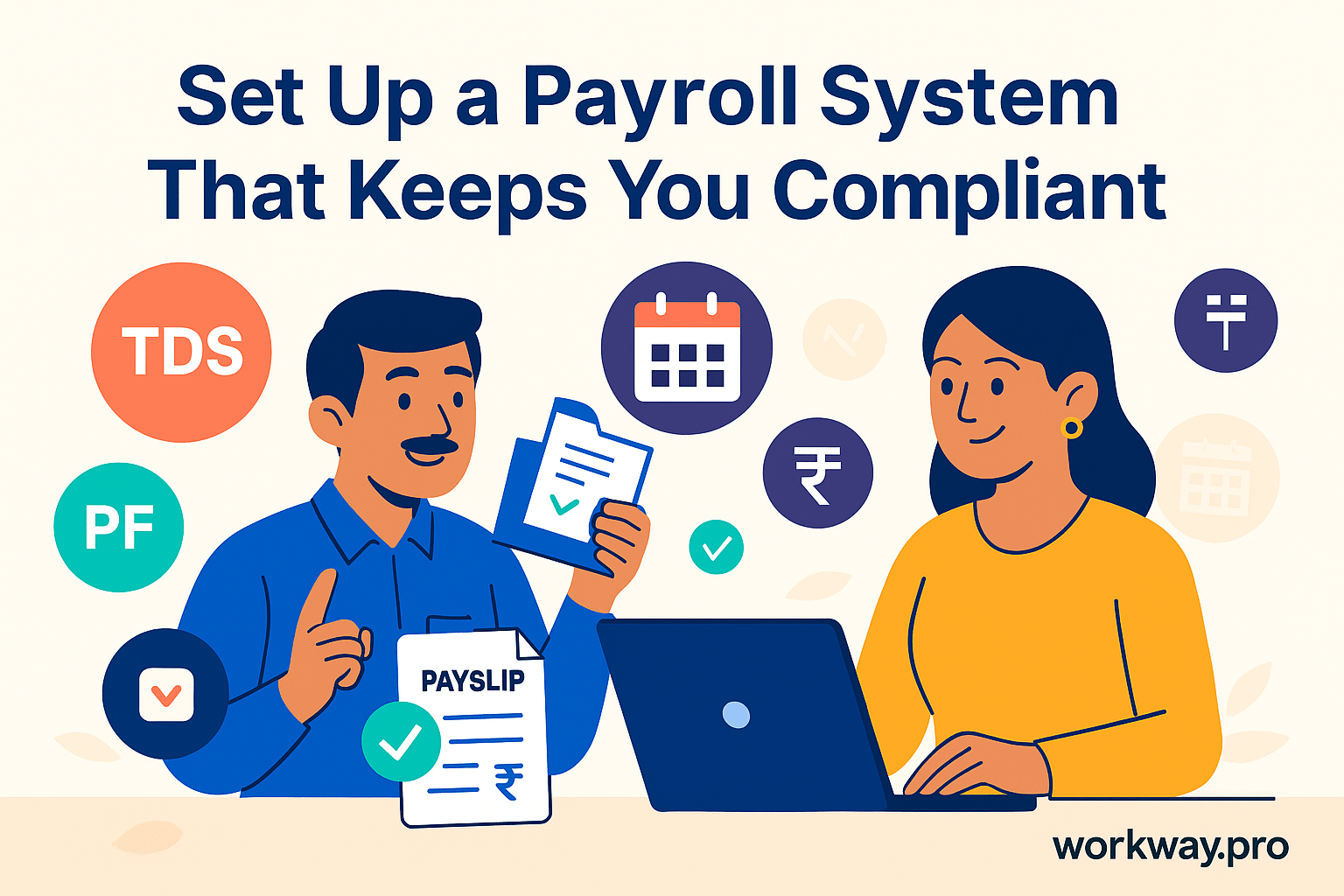How to Set Up a Payroll System for Indian SMEs (2025)

How to Set Up a Compliant Payroll System for Indian SMEs
Running payroll in India can be tricky—especially for small and medium-sized enterprises (SMEs). With so many statutory rules, deadlines, and calculations, a small mistake can lead to penalties, unhappy employees, or compliance issues.
But the good news? Setting up a compliant payroll system for Indian SMEs isn’t as complicated as it sounds—if you follow a clear process and use the right tools.
In this step-by-step guide, you’ll learn how to build a payroll system that’s efficient, compliant, and tailored to Indian SMEs in 2025.
1. Understand Indian Payroll Compliance
Before anything else, understand the legal side of payroll in India. SMEs need to comply with several labor laws and tax regulations, including:
Provident Fund (PF)
Employee State Insurance (ESI)
Professional Tax (PT) (varies by state)
Labour Welfare Fund (LWF)
TDS (Tax Deducted at Source)
Minimum Wages Act
Shops and Establishment Act
Pro tip: Compliance depends on your company size, state, and industry. Consult with an expert or choose payroll software that stays up to date automatically.
2. Collect and Maintain Accurate Employee Data
Every payroll system for Indian SMEs begins with organized employee information. You’ll need to collect:
Full name, PAN, Aadhaar
Date of birth and joining
Designation and salary structure
Bank account details
Attendance and leave records
This ensures employees are paid correctly and statutory reports are filed accurately.
3. Choose the Right Payroll Software for Indian SMEs
Forget spreadsheets. For error-free payroll, it’s best to adopt a cloud-based payroll system designed specifically for Indian SMEs.
The best software will:
Auto-calculate PF, ESI, and TDS
Generate payslips and Form 16
Integrate attendance and leave
Handle real-time compliance updates
✅ [Explore Top HR Automation Features for Indian SMEs →]
4. Define Salary Structure and Pay Cycle
Your salary structure should include:
Basic Pay
HRA
Special Allowances
Bonuses or reimbursements
Statutory deductions (PF, TDS, ESI)
Also, finalize your payroll cycle—monthly is most common. A clear structure ensures payroll is predictable and compliant.
5. Link Attendance to Payroll
Inaccurate attendance leads to payroll errors. Use:
Biometric or GPS-based attendance
Leave management tools with approvals
Automated leave accruals and carry-forwards
📲 Tools like workway.pro let you connect attendance and payroll seamlessly.
6. Calculate Deductions and File on Time
Use your payroll system to automatically calculate and deduct:
PF
ESI
TDS
PT (where applicable)
Then file returns before due dates. Late filings result in fines or government notices.
7. Generate Payslips and Salary Proofs
Payslips aren’t just paperwork—they’re required for:
Personal loans and credit
Visa applications
Employee trust and legal compliance
Make sure every employee receives a detailed payslip showing gross pay, deductions, and net pay.
8. Keep Payroll Records & Conduct Internal Audits
Keep records of all payroll activity—salary disbursements, PF payments, challans, TDS filings—for at least 3–5 years. Conduct internal audits every quarter to stay ahead of any issues.
🎯 Final Thoughts
A compliant payroll system for Indian SMEs doesn’t just keep the government happy—it builds trust, improves employee satisfaction, and saves hours of admin work each month. With Indian labor laws constantly evolving, staying compliant means being proactive, not reactive.
By using modern payroll software, defining clear processes, and linking your HR workflows, you can simplify even the most complex payroll tasks. From PF and TDS to accurate payslips and recordkeeping, the right payroll solution helps you avoid costly mistakes and maintain full control.
👉 Tired of payroll chaos? Try Workway.pro — an India-first payroll system built for SMEs that automates compliance, integrates HR workflows, and gives you peace of mind.
🙋♂️ FAQs: Payroll System for Indian SMEs
Q1: How often should payroll compliance be reviewed?
At least once every quarter to stay aligned with any labor law updates and avoid penalties.
Q2: Can small teams handle payroll manually?
Manual processes often cause errors and non-compliance. Using software reduces risk and saves time.